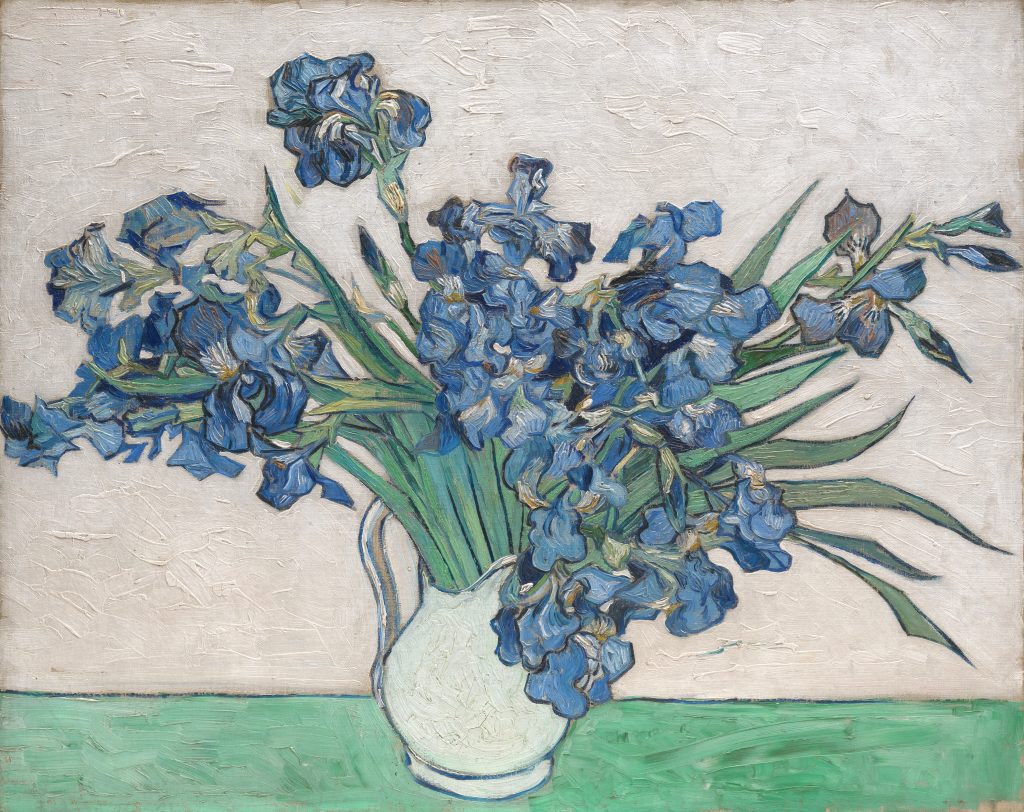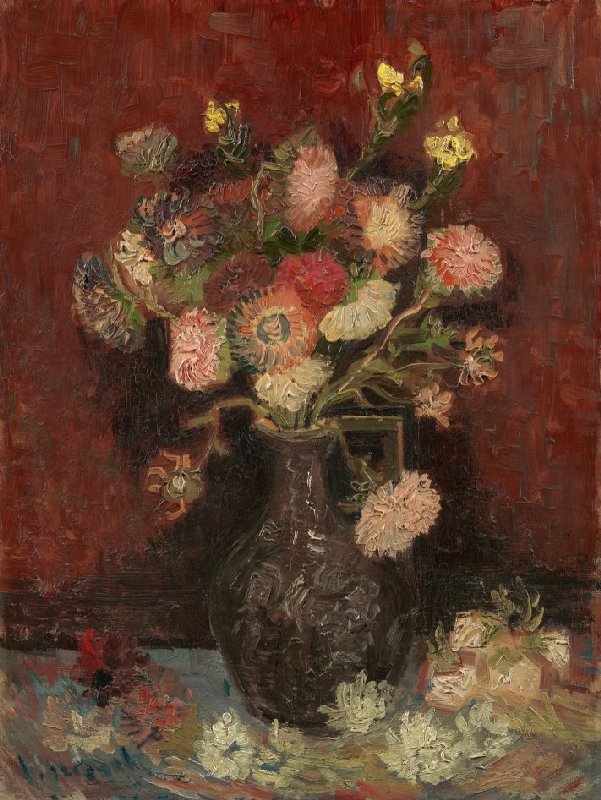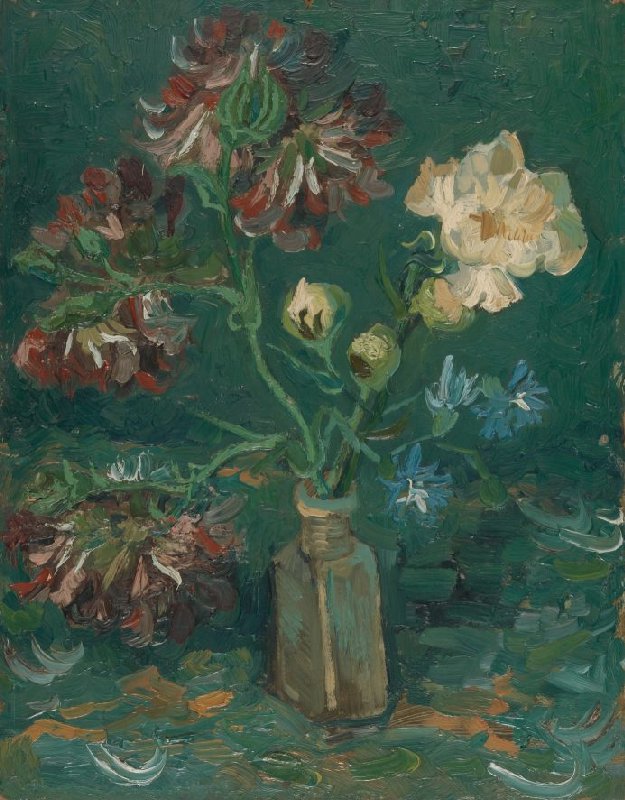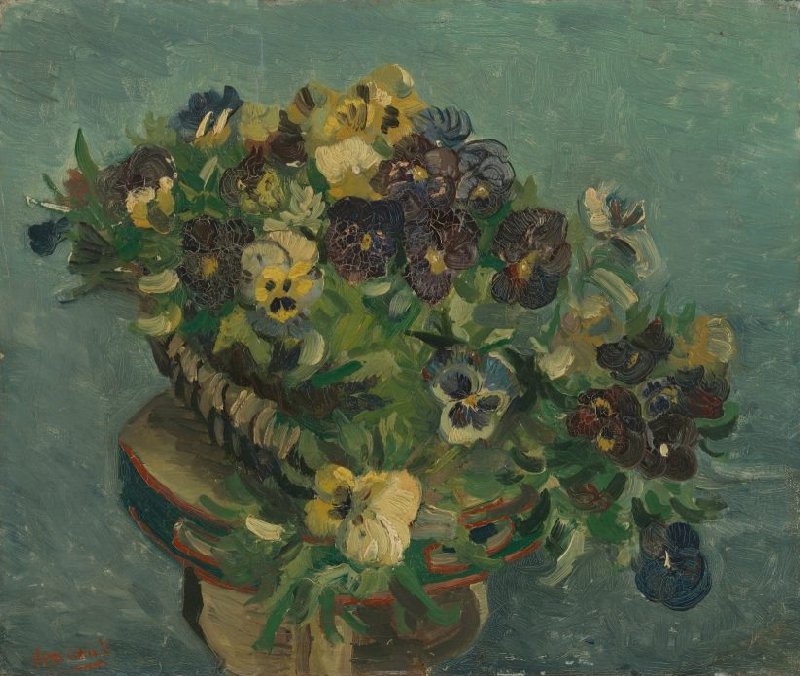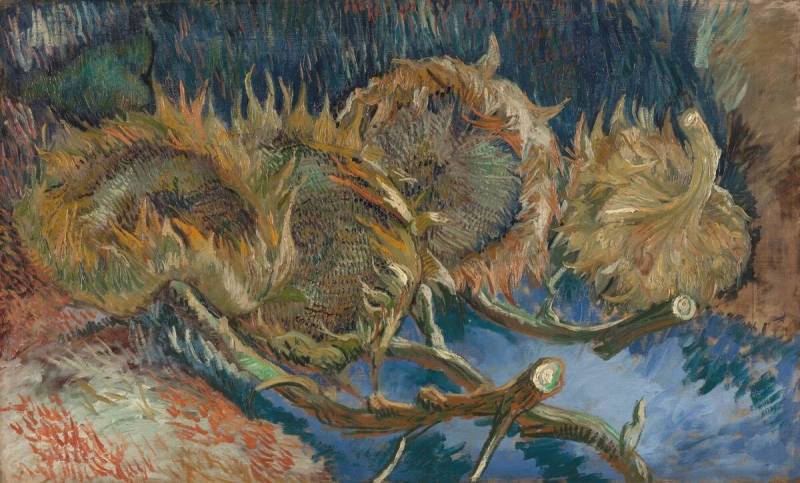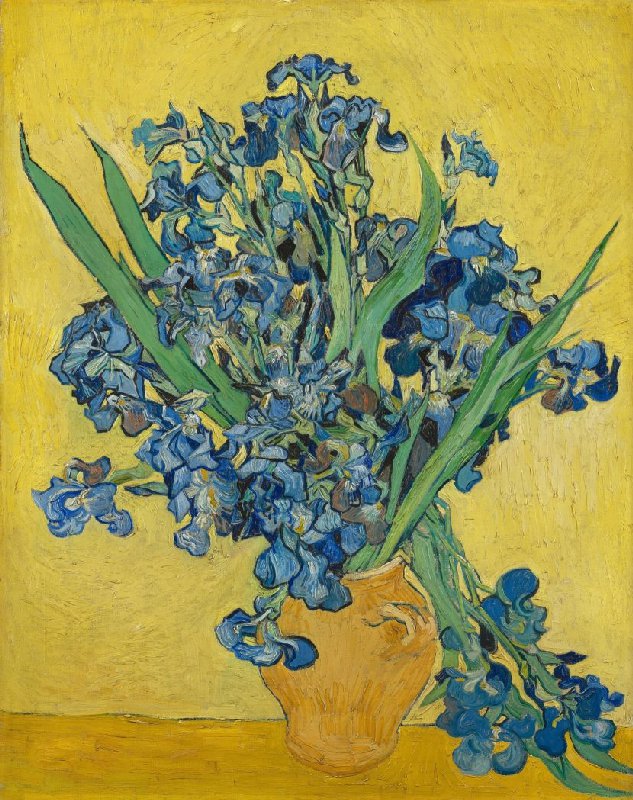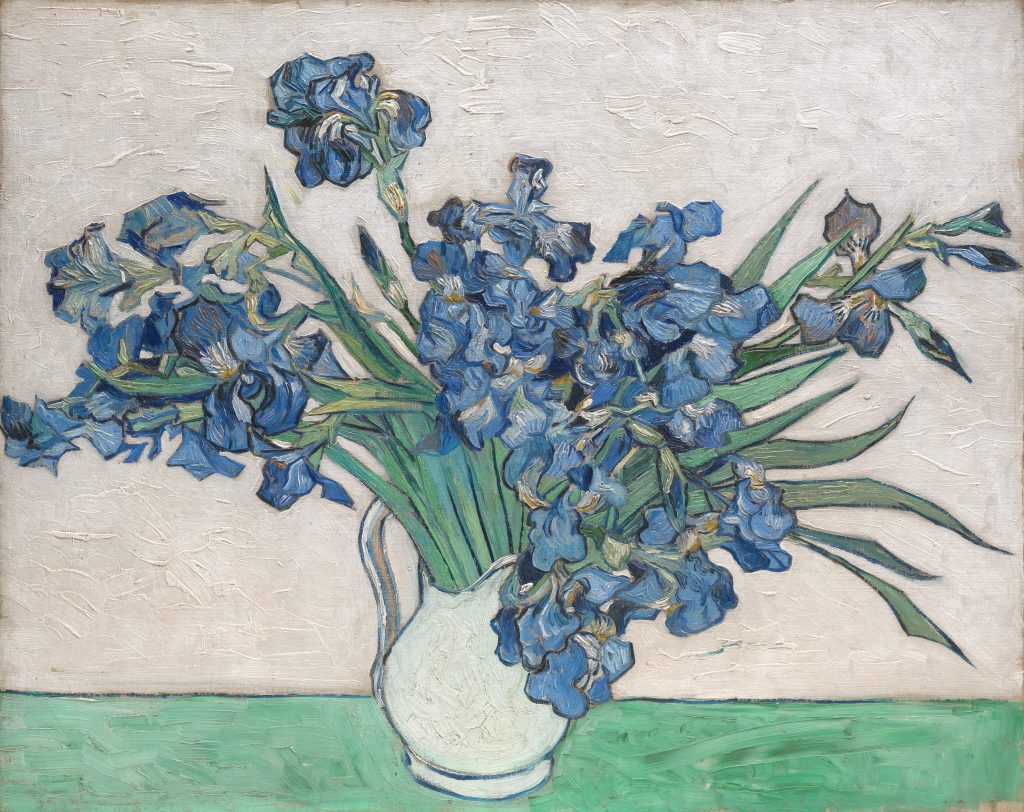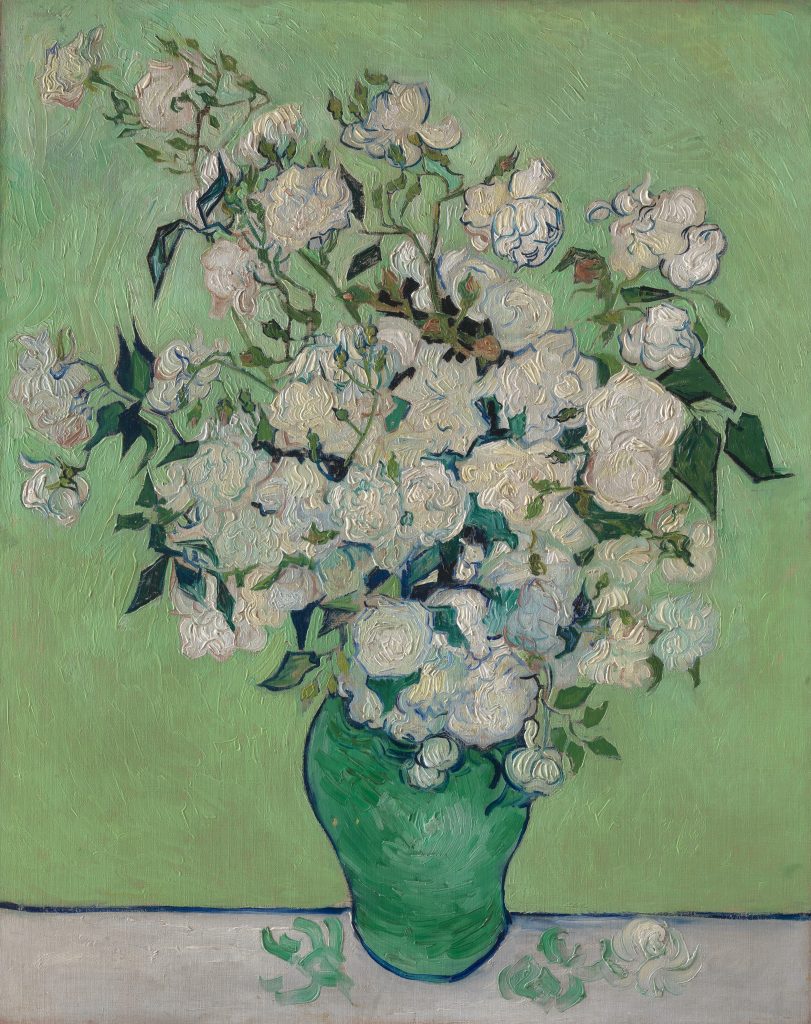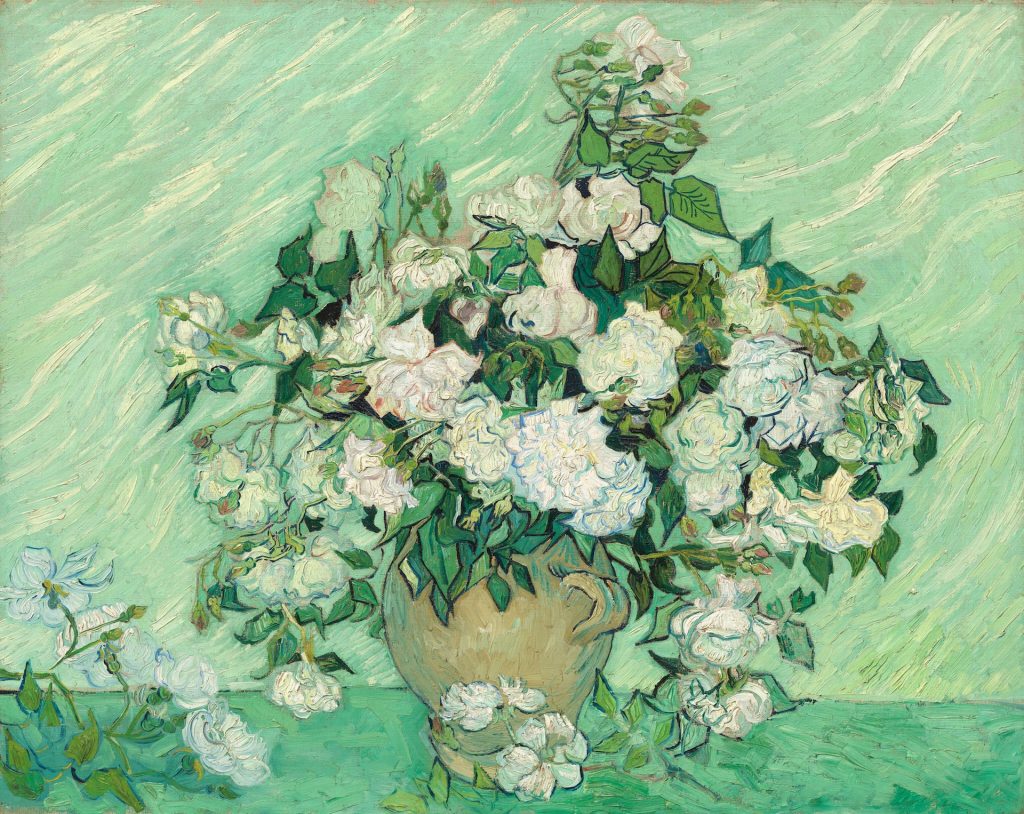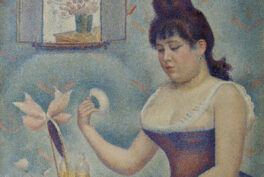Summary
Let’s take a closer look at some of Van Gogh’s flower paintings.
- All about the iconic Sunflowers.
- Formal experiments in flower still lifes.
- Japanese influence in Van Gogh’s art.
- Bouquets as art therapy.
- The final series of flower paintings, mainly irises and roses.
Why Flowers and Bouquets?
As mentioned, flowers and bouquets are among Van Gogh’s favorite subjects. It is still not clear today exactly how many floral canvases he painted. Many of the most important museums in the world exhibit at least one of Van Gogh’s flower compositions. However, we know that some of the paintings he created were destroyed (during World War II for example), others were lost, and some remain in private collections.
Flowers had many special meanings to the Dutch artist. First of all, they represented specific emotions and feelings, sunflowers symbolized passion for life, love for summer in Provence, and even gratitude. They were also a source of income. As Van Gogh tried to support himself through his art, he produced many floral canvases which were easier to sell. Furthermore, they were ideal subjects for formal experiments and thus one can say these paintings helped in Van Gogh’s art evolution. For example, they were a way for the artist to practice the concepts of color theory. Finally, painting them was like therapy, a sort of “self-art therapy” ahead of its time.
The Most Famous Series: Sunflowers
When you think of Van Gogh’s flowers, surely the first thing that comes to your mind are his iconic Sunflowers. But can you tell with absolute certainty the color of the background? Or how many sunflowers are in the vase? Probably not.
That’s because there are multiple versions, painted within two series. During his life, Van Gogh always maintained a habit of creating multiple versions on a certain theme, in particular of his dearest subjects. The second Sunflowers series is probably one of the most renowned and best-loved around the world. It consisted of seven paintings, five of which depict the same bouquet in a yellow vase. They were painted between 1888-1889, during Van Gogh’s stay in his beloved Arles, Provence. The Sunflowers were meant to decorate the guest room in his house, for the expected visit of his friend Paul Gauguin.
In Van Gogh’s mind, sunflowers evoked summer, Provence, and passion for life. For him, they were a direct reflection of the sun. They could also be interpreted as a symbol of friendship, gratitude, and the cycle of life as, in his compositions, we can often see different stages of the blooms.
Two versions are currently kept in London and Munich. They are strongly bound together and were probably meant as balanced antagonists. The Munich version has a light blue background, contrasting with the flowers. The London painting appears monochromatic as the background is also yellow, but it maintains a strong visual power.
Here you can read more about both Sunflowers series.
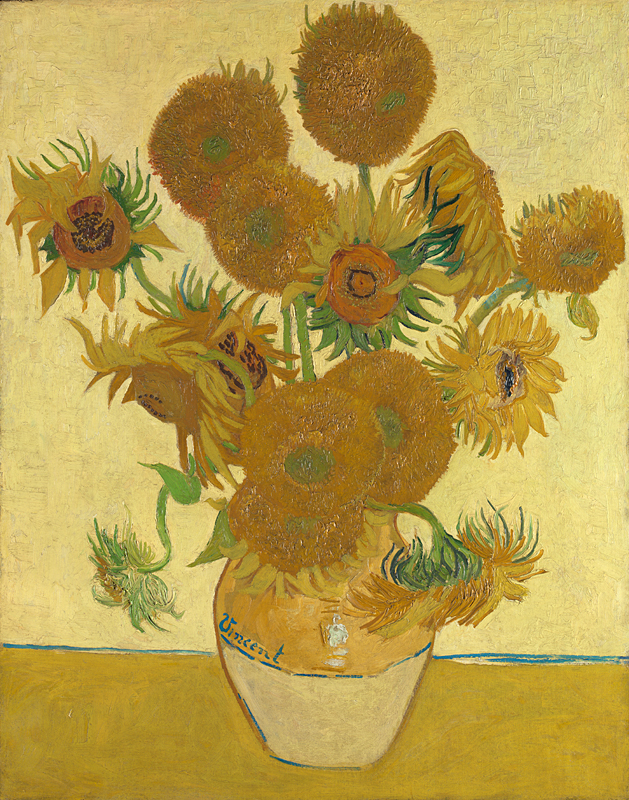
Vincent van Gogh, Sunflowers, 1888, National Gallery, London, UK.
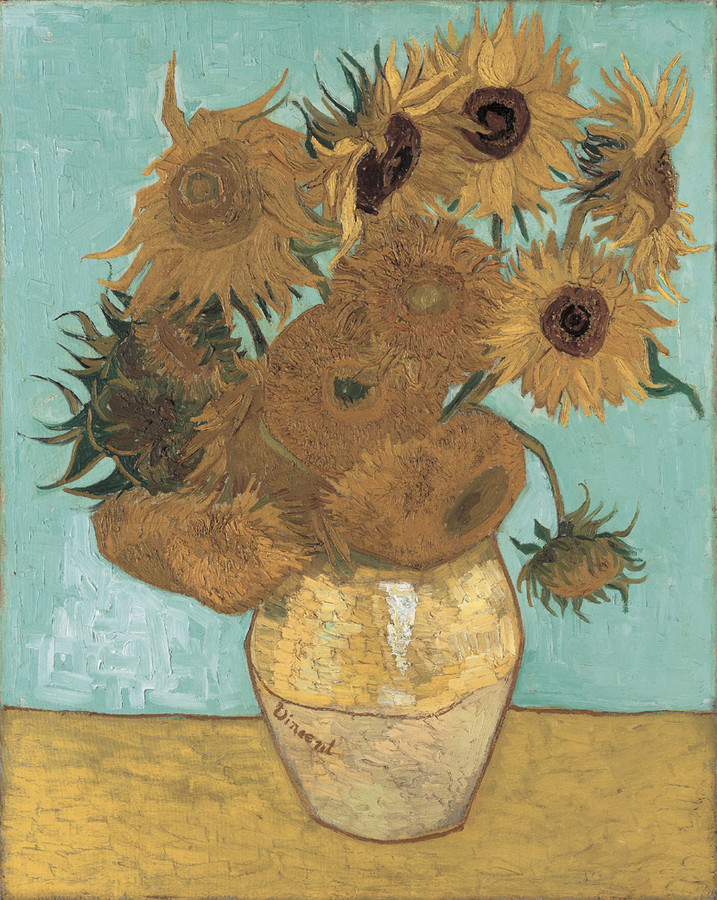
Vincent van Gogh, Sunflowers, 1888, Neue Pinakothek, Munich, Germany.
Paris 1886: From Inspiration to Experimentation
The year 1886 was pivotal for Van Gogh’s floral art. That year he moved to Paris and was able to start visiting the Louvre. Among the works he admired the most were those by Eugène Delacroix, including floral still lifes. Van Gogh began to realize that painting flowers as subjects could be very attractive to buyers, so he started his adventure with colorful bouquets.
Unfortunately, he did not have much luck in selling his floral artworks at the time. On the other hand, flowers allowed his art to evolve. In fact, they became an excuse to experiment with new concepts and ideas, in particular color theory and complementary colors. Van Gogh not only admired Delacroix’s paintings, but also his style and theory about colors. He tried to put all these elements into practice. For example, he began to use more rapid, looser brushstrokes.
It is believed that during the summer of 1886, Van Gogh produced over 35 floral paintings. His brother Theo wrote that people who knew Vincent were donating him flowers every week.
In Vase with Chinese Asters and Gladioli and Small Bottle with Peonies and Blue Delphiniums Van Gogh juxtaposed two complementary colors, red and green. In the first one, red is prevalent, in the second painting green is the main character. Another still life, Basket of Pansies, is based on the contrast of yellow and violet. Another example of how important of complementary colors were to Van Gogh’s art is Four Sunflowers Gone to Seed, created the following year. This time, the contrast is created through use of orange and blue.
Admiring Japanese Floral Art
For Van Gogh, flowers were also a tool to express admiration. Japanese art was among his favorite, and as Van Gogh once admitted, it made him happy. The artist explored the Japanese technique of printing and produced some floral artworks recalling Japanese esthetics. They combine Van Gogh’s love for flowers as symbols of life, his admiration for Japan, his skills with color, and curiosity about technical novelties.
Van Gogh created some Japan-inspired paintings, two of which are kept at the Van Gogh Museum in Amsterdam. The first, Almond Blossom, shows a branch with little, delicate pink flowers on an intense blue background. The composition and the black outlines recall the typical prints of the Land of the Rising Sun, while the brushstrokes are recognizable as Van Gogh’s.
Another, even more Asian-driven canvas is Flowering Plum Orchard (after Hiroshige). As the title mentions, it is a copy of a work by the Japanese artist Utagawa Hiroshige, but again with personal touches, such as brighter colors and loose brushstrokes.
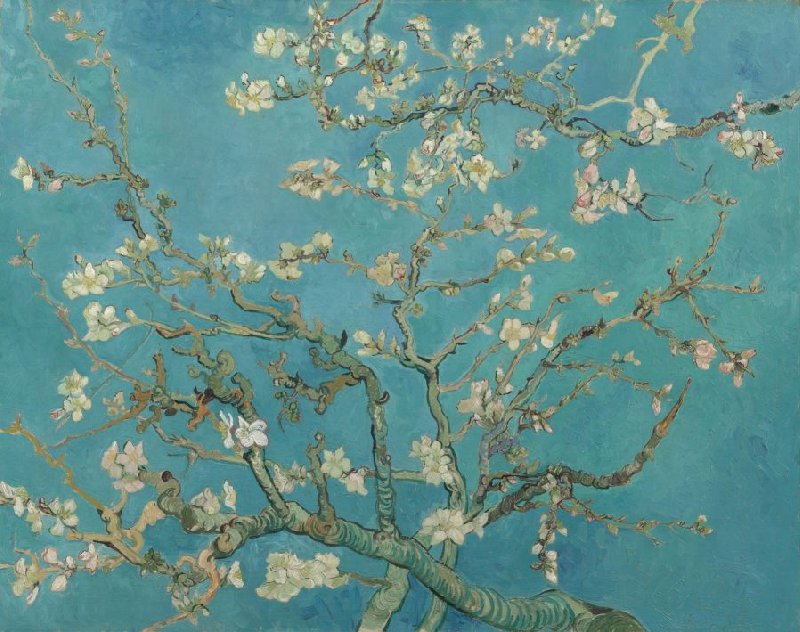
Vincent van Gogh, Almond Blossom, 1890, Van Gogh Museum, Amsterdam, The Netherlands.
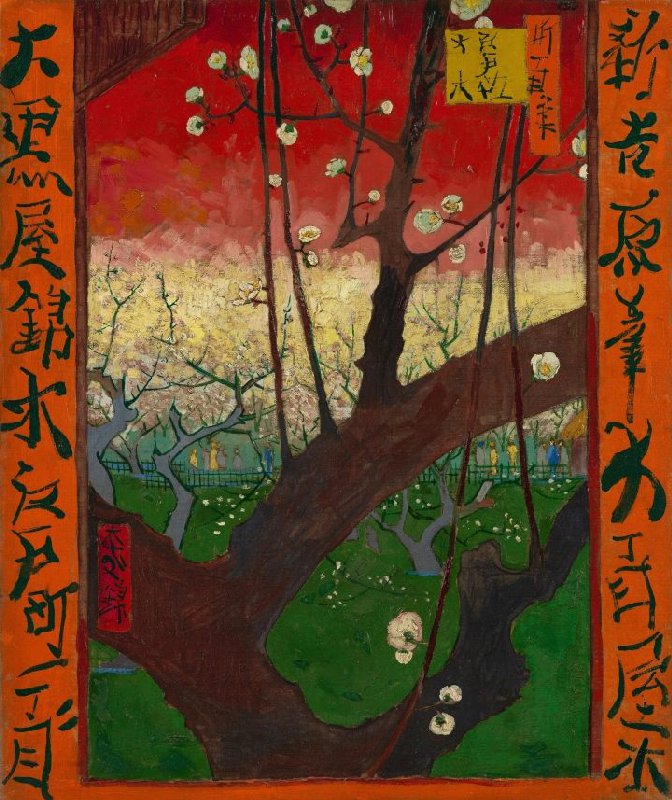
Vincent van Gogh, Flowering Plum Orchard (after Hiroshige), 1887, Van Gogh Museum, Amsterdam, The Netherlands. 10
Bouquets as Art Therapy
Towards the end of his life, Van Gogh struggled with his mental health and decided to admit himself voluntarily to the psychiatric hospital in Saint-Rémy de Provence. While there he continued to paint, realizing again a number of flower paintings.
In 1889 he created Lilacs and Butterflies and Poppies. The first showcases his signature brushstrokes, vivid colors, and an uncanny energy. It is as if his internal agony was channeled through his talent to express something beautiful and alleviate his spirit. In the second masterpiece, Van Gogh returns to the motif we’ve seen already in his Sunflowers series: the cycle of life. In the painting, some poppies are yet to bloom, some are at their maximum opening, meanwhile others are already fading. The butterflies with their limited lifespan emphasize the transience of life.
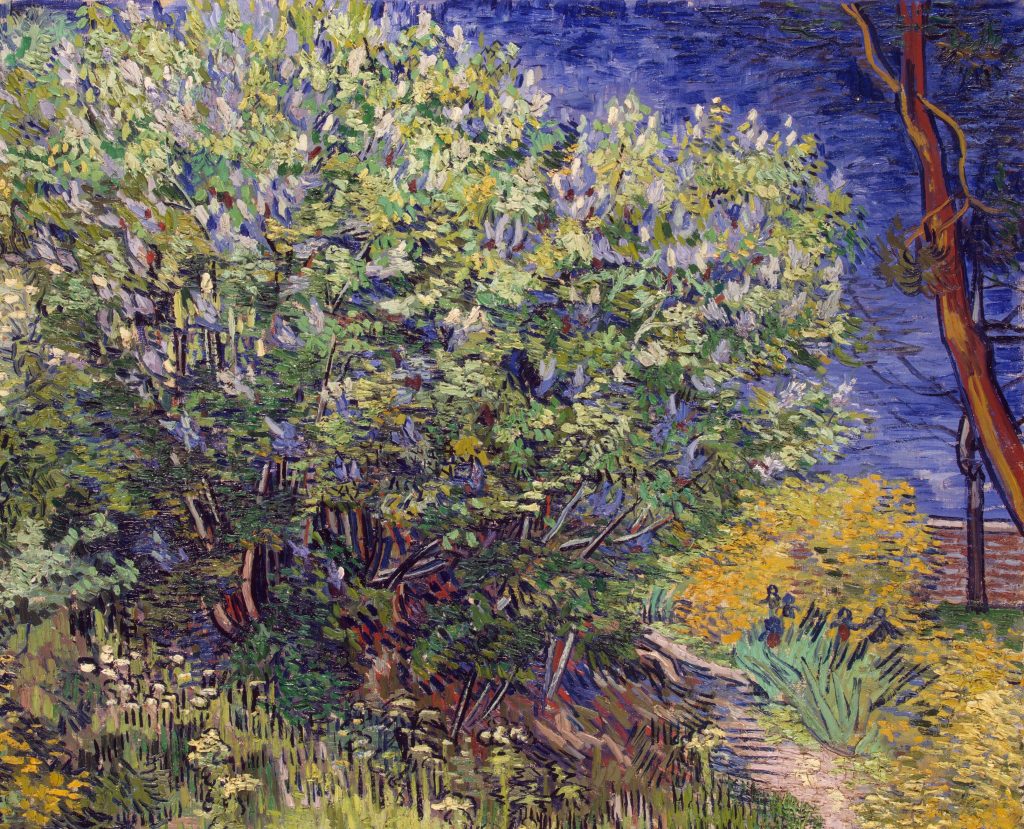
Vincent van Gogh, Lilacs, 1889, Hermitage Museum, St. Petersburg, Russia.
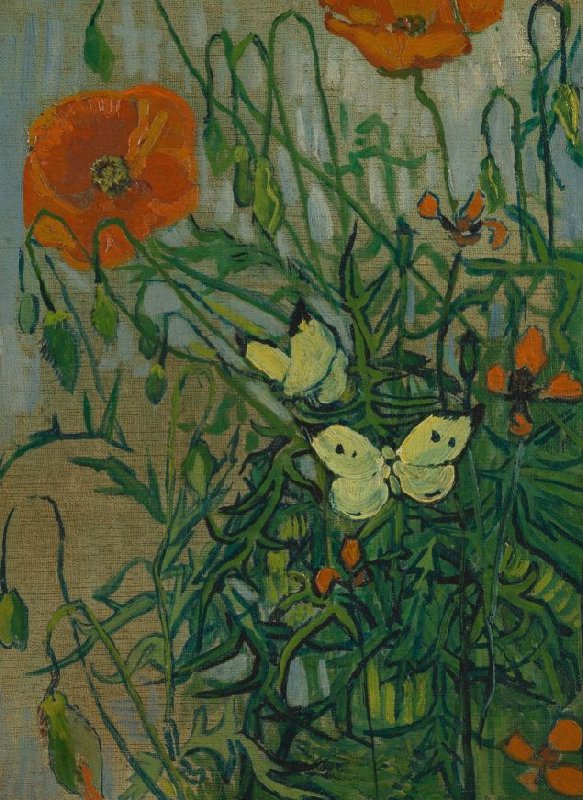
Vincent van Gogh, Butterflies and Poppies, 1889, Van Gogh Museum, Amsterdam, The Netherlands.
The Final Series
This theme was furtherly developed in Van Gogh’s final series. His paintings of irises and roses could be considered as a single series, composed of four canvases, two for each type of flower. They were all created in 1890, towards the end of his stay at Saint-Rémy hospital. All the artworks are similar in composition and use complementary color contrast. They also come from the same canvas: the artist had taken a single roll and cut it into four equally sized pieces.
These still lifes depict flowers in various stages of bloom. Even though most of the them are in full bloom, some roses have already fallen onto the table in both versions, and some irises appear dry. Once again, the paintings symbolize the cycle of life, the fact that death is coming for everyone and is part of our existence. It seems that Van Gogh accepted it and continued to cure himself and his thoughts through art.
The theme known in art as memento mori has an even more powerful meaning if we consider two facts. Firstly, the artist died only several weeks after completing these paintings. Secondly, during the following years the pigments he used gradually faded, and thus some of the colors changed. In particular, the original violet turned into blue, and the pink into white. These unintentional and unexpected effects remind us that even artworks can gradually fade and in a sense die.
